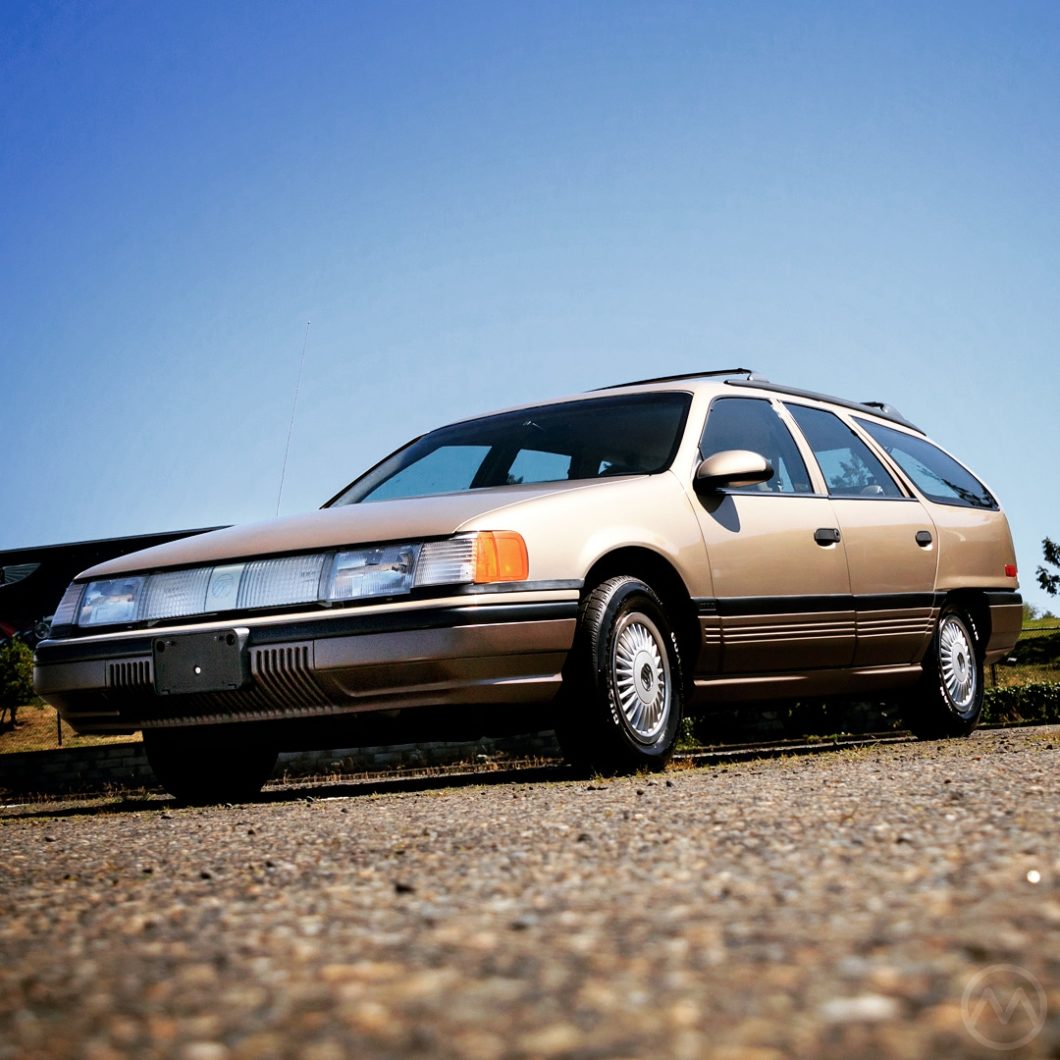1980 and 1981 were terrible years at Ford – operating losses were $1.5B in 1980 and nearly $1.2B in 1981, and only International profits kept the situation from being even worse. But change was coming. In late 1979, Henry Ford II began the process of retiring and Philip Caldwell assumed the reins, ushering in a raft of new projects that would turn the company around.
In 1981, Ford had just three basic car platforms in North America – the brand new front-drive Escort, the big rear-drive Panther, and the Fox – introduced in 1978 on the Fairmont and now underpinning almost 2/3rds of the lineup.
Although the Fox was good architecture, it was far from cutting edge, and some of the newer Foxes encountered less enthusiastic receptions than the Fairmont and the 1979 Mustang – notably the 1980 T-bird and 1981 Granada, which never had the market presence of their predecessors.
Ford’s New Wave
But projects were already underway – starting with the “Aero” T-Bird/Cougar in 1983 and continuing with the Tempo/Topaz in 1984. But the biggest project, going on since late 1979, was the 1986 Taurus/Sable, which debuted in early 1985.
The Taurus and Sable were engineered and designed in entirely new ways for Ford.
Although Jack Telnack’s styling team often gets the lion’s share of credit because the shape was so different from other domestic cars of that time, the ringmaster of “Team Taurus” (originally called Project Sigma) was Lewis Veraldi, a production and design expert who’d also helped shepherd the Mk1 Fiesta to production.
Caldwell gave Veraldi considerably leeway to assemble a team and design something that would be futuristic and future-proof – a competitive, front-drive, mid-size platform that would be fresh for 10-15 years.
Veraldi’s team was a modern platform team – marketing, engineering, and production worked together as a group rather than separately in sequence. There was no “throw it over the wall” thinking.
W. Edwards Deming
The process improvements key to the Taurus/Sable being quality cars (and to Ford’s improvements generally) came from legendary process guru W. Edwards Deming, brought in to help Ford by Don Peterson and newly-appointed quality chief Larry Moore. Deming had famously introduced similar quality methods in Japan in the 1950s and 1960s; methods practiced by Ford’s Japanese rivals.
Few details were left to chance – heavy use of customer clinics informed what we’d now call the “User experience design” of the interior and the practical aspects of the car, though comments were sometimes taken with a grain of salt. Some clinics thought the cars looked too radical, which caused some consternation over time as the team could never be 100% sure if it indeed was too far out.
With European and Japanese designs trending toward the “Aero Look,” Telnack’s stylists stuck to their guns. The exterior design was mostly locked down in the summer of 1982. Ray Everts (of Ford Sierra fame) led style on the sedans, Jeff Teague (son of AMC’s Dick Teague) led style on the wagon.
Originally, the sedan had been a five-door hatch, but the hatch idea was dropped due to rigidity and NVH concerns.
The Sable would be the more unorthodox of the pair – smooth sides and a light bar front end looked futuristic. Multi-pass stampings and other forward-thinking parts were created to create unique looks for each car at low cost. You may notice that the Taurus has a crease on the side, the Sable is smooth. Similarly, the supports front the front fascia were designed with multiple anchor points for headlights and the light bar, one part at one cost, two results.
Wherever possible, design and production collaborated to reduce the cost and complexity of flush glass and “aero” doors that blended into the roof – requiring tighter tolerances and more precision assembly.
Factories in Atlanta and Chicago were comprehensively modernized for better attention to quality and assembly was informed by design. Ford’s reputation for quality control had suffered mightily in the 1970s and making sure the car delivered was key to convincing customers to trust such a radical vehicle.
Not every Taurus and Sable were perfect, but quality was generally far beyond Granada/Fairmont levels of the previous decade – keeping to Edwards Deming’s methods had done a huge amount of good.
A clean-sheet V6, the Vulcan, was created just for these new cars (joined later by the HSC four and the Essex V6). The interiors, with design overseen by Mimi Vandermolen, were created around customer clinics and feedback, producing a much more ergonomic design than any recent domestic cars had enjoyed. The interior looks a little dated today, but was a totally new environment at the time.
All this new stuff – the Taurus and Sable were mostly new pieces – cost over $3.5B, an investment so large that if the cars didn’t succeed, Ford would have had to declare chapter 11.
Showtime
The Taurus & Sable debuted at a lavish party at MGM studios in January, 1985, and while radical for a domestic car, the gamble paid off. The impact was seismic and the pair generated rivers of black ink for Ford; capturing a huge amount of mid-size marketshare from GM.
This gorgeous ’86, seen at RadwoodPNW, was saved from a salvage auction and put back on the road by current caretaker.
A lower-end LS, it has a number of unusual features including a leather interior – uncommon on any Taurus/Sable – and plastic “polycast” wheels, a steel wheel made to look like an aluminum rim.
Both Taurus and Sable became common road furniture pretty quickly, which makes them seem less radical today – but in 1985, they were unlike any other U.S. Domestic cars.


I’ve been on the hunt for an 86 Taurus LX wagon but they’re so hard to find.